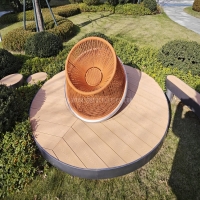Welcome to the website for landscape facilities products and knowledge.
How does the table’s design account for the need for quick transitions between different event setups?
The fundamental challenge in event management lies in the delicate balance between creating memorable, distinct experiences and maintaining operational efficiency. Modern table design has evolved to directly address the critical need for swift transitions between different event setups, transforming what was once a logistical bottleneck into a streamlined process. This engineering marvel is achieved through several key design philosophies.
At the core of rapid-transition tables is modularity. Unlike traditional, monolithic tables, these systems are built from interchangeable components. Legs that attach with swift-lock mechanisms rather than bolts, tabletop segments that connect seamlessly, and lightweight cores that replace heavy solid wood are all standard. This allows a team to quickly dismantle a long banquet-style setup and reassemble the same components into numerous rounds for a conference breakout session in a fraction of the time.
Material science plays an equally vital role. The use of advanced, lightweight composites and high-pressure laminates ensures that each component is easy for staff to handle without sacrificing durability or aesthetic appeal. A table that is heavy and cumbersome inherently resists quick change; a lightweight one invites it. Furthermore, designs often incorporate folding capabilities or nesting features, allowing for compact storage and immediate redeployment, which is crucial for venues hosting multiple events in a single day.
Another sophisticated feature is the incorporation of integrated technology and utility management. Tables designed for quick transitions often have built-in raceways for power and data cables, with easy-access ports that can be opened or closed as needed. This eliminates the time-consuming and hazardous process of taping down cords between events, allowing the transition from a corporate meeting requiring power to a gala dinner to be seamless and safe.
Finally, the design prioritizes intuitive user interaction. Mechanisms are designed to be tool-free, using levers, clamps, and pins that can be operated without technical expertise. Color-coded components or clear instructional icons on the table itself can guide setup crews, reducing both time and the potential for error. This human-centered design thinking ensures that the speed engineered into the table's physical structure is fully realized in its practical application.
In conclusion, the modern event table is no longer a static piece of furniture but a dynamic component of the event ecosystem. Through modular design, advanced materials, integrated utility management, and intuitive operation, these tables are meticulously engineered to account for the relentless pace of the event industry, turning over venues with an efficiency that was previously unimaginable.
Related search:

Recommendation
Swivel chair-Specialty steel structure woven rattan leisure chair with rotatable design